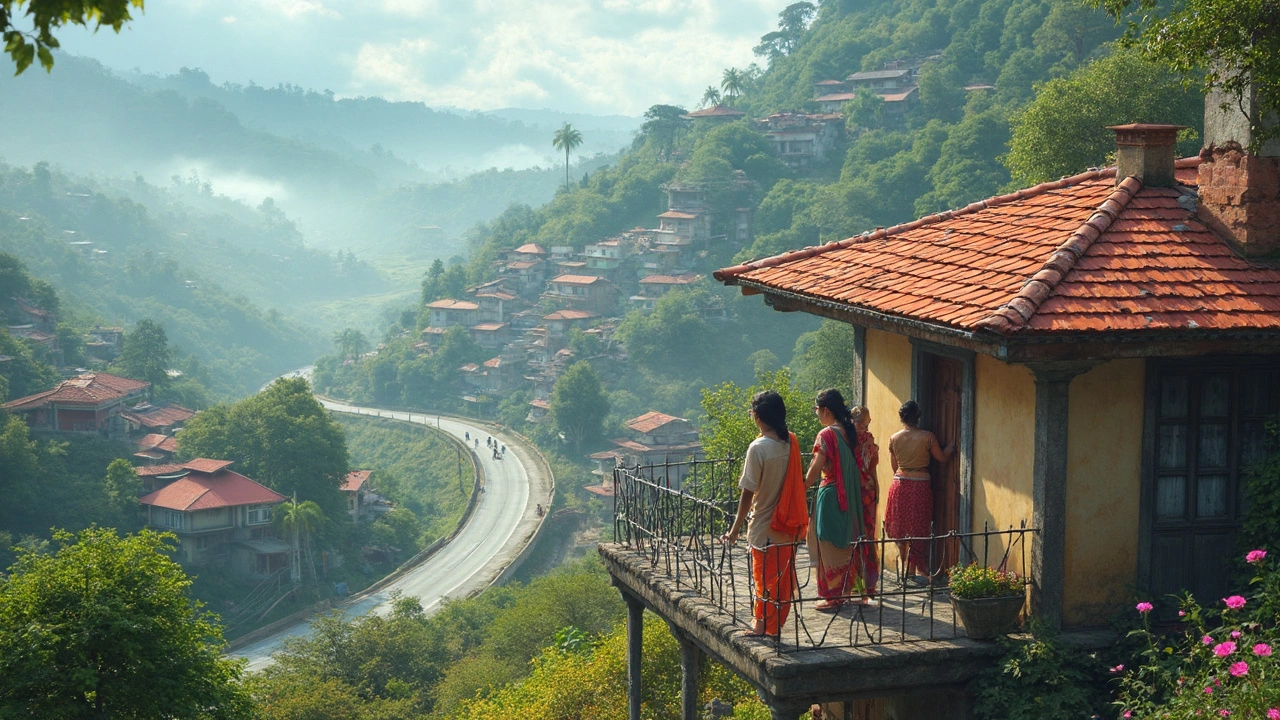SEARCH
Hill Stations in India: Your Cool Summer Escape
Feeling the heat? India’s hill stations offer instant relief. A short drive or a quick flight can take you from scorching plains to crisp mountain air. No need for fancy gear—just pack a light jacket, your camera, and a sense of adventure.
Why Visit Hill Stations?
Hill stations aren’t just about cooler temperatures. They serve up stunning views, fresh tea, and a break from city noise. Most places have a colonial vibe, with heritage hotels and narrow lanes that make strolling feel like a step back in time. Plus, the altitude often means cleaner air—perfect for a quick detox.
When is the best time to go? October to March is ideal. The monsoon can make some roads slippery, while the summer months (April‑June) can still be warm at lower elevations but pleasant higher up. If you love festivals, plan around local events like the Darjeeling Carnival or the Kodaikanal Summer Fest.
Top Picks Across the Country
Shimla, Himachal Pradesh – The original hill station, Shimsha blends Victorian architecture with bustling markets. Ride the historic toy train, grab a hot buttered biscuit, and don’t miss the sunrise from the Ridge.
Manali, Himachal Pradesh – Known for adventure, Manali offers paragliding, river rafting, and treks to Solang Valley. If you’re a first‑timer, the Rohtang Pass is a must‑see (check opening dates).
Darjeeling, West Bengal – Famous for tea, you can sip a cup while watching the mist roll over the Kanchenjunga range. The Darjeeling Himalayan Railway is a UNESCO‑listed ride that’s both scenic and budget‑friendly.
Ooty, Tamil Nadu – Nestled in the Nilgiris, Ooty’s botanical garden and the toy train to Coonoor are crowd‑pleasers. The weather stays cool year‑round, making it a safe bet any time you visit South India.
Munnar, Kerala – Rolling tea plantations, waterfalls, and wildlife sanctuaries define Munnar. Rent a bike to explore the lesser‑known Eravikulam National Park, where you might spot the endangered Nilgiri tahr.
Nainital, Uttarakhand – Centered around a sparkling lake, Nainital is perfect for paddle‑boarding or a leisurely boat ride. The view from Snow View point gives you a panoramic picture of the Himalayan foothills.
Coorg, Karnataka – Often called the "Scotland of India," Coorg offers coffee estates, mist‑covered hills, and the chance to try traditional Kodava cuisine. The Iruppu Falls are a quick day‑trip option.
Mahabaleshwar, Maharashtra – Known for strawberries, this Western Ghats gem has many “points” (like Wilson Point) where you can watch the sunrise. The surrounding forests are great for short hikes.
Mussoorie, Uttarakhand – Called the "Queen of Hills," Mussoorie boasts a long promenade (Mall Road) and the iconic Kempty Falls. The cable‑car ride to Gun Hill saves you a steep climb and offers city views.
Where to stay? Options range from heritage hotels (like the Viceregal Lodge in Shimla) to budget hostels and homestays. Booking a few weeks ahead during peak season (Oct‑Dec) secures better rates.
How to get there? Most hill stations have a nearby airport (e.g., Dehradun for Mussoorie, Bagdogra for Darjeeling) or a well‑connected railway station. From the city, shared taxis or local buses are the most affordable choices.
Quick tip: Pack layers. Even in summer, evenings can drop to 10‑15°C, and mornings are often foggy. A lightweight sweater, a rain jacket (just in case), and sturdy shoes will keep you comfortable.
Ready to escape the heat? Pick a hill station that matches your vibe—whether it’s the colonial charm of Shimla or the tea‑filled lanes of Darjeeling—and start planning. The mountains are waiting, and the best part is you don’t need a passport to enjoy them.

Best Hill Station for Living: What Really Makes One Stand Out?

Thinking about swapping city smog for mountain air? This article digs into what makes a hill station a great place to live, not just visit. We'll break down the real-life perks and problems of daily mountain life, covering infrastructure, cost, community, climate, and connectivity. You'll also get some lesser-known tips for picking the place that's right for you. No fluff—just honest, practical info.
Continue reading